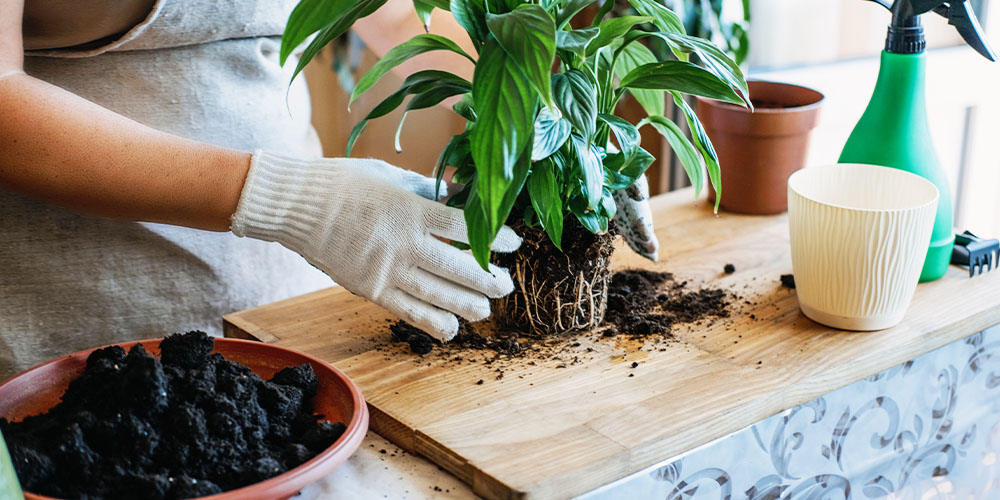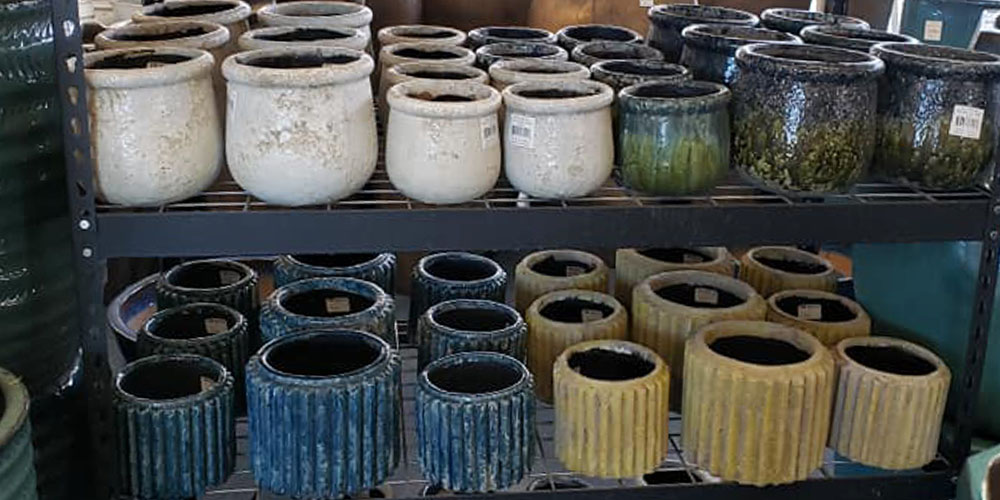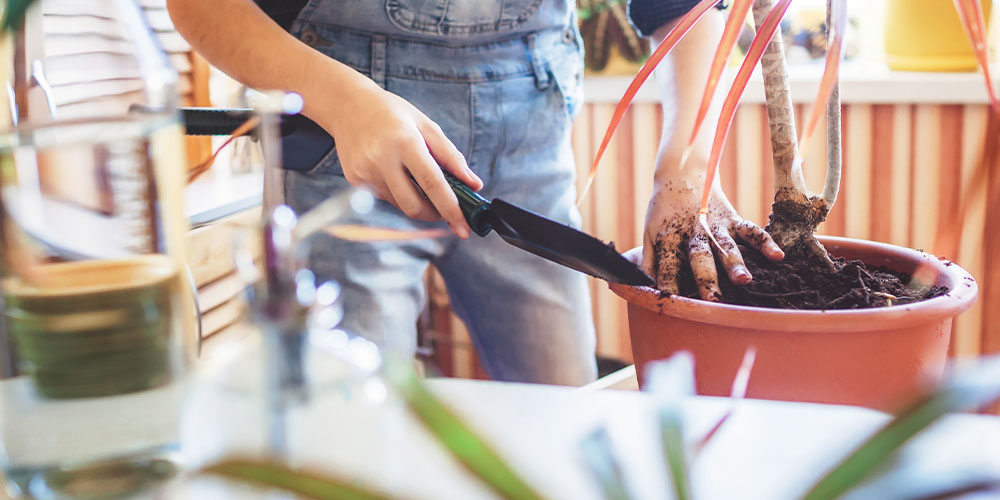There is nothing more satisfying to a houseplant enthusiast than seeing their greenery collection grow. And when we say grow, we don’t just mean adding more plants—we mean when your Fiddle Leaf Fig has almost doubled in size since you bought her! There is an inevitable stage of every houseplant’s life when they need to stretch their legs and move into a new home. Our plant babies grow up so fast!
If you have never repotted any of your plants before, you may be a little nervous about disturbing them or uncertain when it’s the best time to repot them. We’re taking away the guesswork for you.

How Do I Know If I Need to Repot My Plant?
Plants are great communicators once you learn their language! Here are some ways that your houseplant will indicate that it is time for you to transplant it into a bigger pot:
1. Visibly Overgrown Roots: If your plant’s roots are growing out through the drainage holes of its existing pot, that is a pretty good sign that you need to repot your plant. If you can’t tell because the drain tray is attached to the pot or your pot doesn’t have drainage holes, you can gently remove the plant from the pot to look at its base. If your plant’s roots take up most of the bottom of the pot and look like a thick web, then it is time for a new home.
2. Yellow Leaves and Slow Growth: If your plant’s growth seems to have slowed significantly (like more than you would expect during a period of dormancy) or it is growing new foliage, but half of it is yellow, then it’s struggling a little and needs more space.
3. Dry, Shrinking Soil: When your houseplant starts drying out quicker than it has in the past, or the soil seems to be shrinking inside the pot or pulling away from the edges of the pot, it means that there isn’t enough soil to hold all the water it needs to grow.
It is worth mentioning that repotting your houseplant doesn’t always mean you need to move it into a bigger pot. Sometimes, it just needs its soil refreshed. You can also give the roots a little rinse when you do this, too.
If you spot the first two signs we listed above, we recommend moving your plant into a pot one to two inches wider than its current one. If the soil is compacting when you water, and there aren’t any other symptoms, it likely just needs new soil but can stay in the same pot. Generally, your plants need to be repotted every 12 to 18 months for fresh soil.

When Should I Repot My Indoor Plants?
Spring is the best time for repotting since it’s the time of year that your indoor plants finish their dormant period and start to grow again! By repotting your houseplants in the spring, you give them a sufficient amount of time to grow their roots into the new soil.
With that said, if you notice your houseplant is in dire straits in the fall or winter (i.e., it looks like it might not survive until spring), we would recommend repotting your houseplant as soon as you can. Sometimes, it just needs fresh potting soil to gain the nutrients needed to survive.

How to Repot Your Houseplant
If you intend to repot your houseplant into a larger container, prepare that container before removing your plant from its existing pot. Pour a layer of new potting mix into the new container and pack it down slightly. Avoid potting with soil from your garden, as it differs from potting soil!
Then, gently remove your plant from its existing container. Try to avoid pulling the plant out from its stems. Instead, use gravity to your advantage and gently tip it upside down so that it falls out of the pot into your hand. Lastly, water it and enjoy watching your plant settle into its new home!
If you are looking for some new containers or even want to add to your houseplant collection, stop by to see us at Plant Perfect for a visit and check out our new stock!

